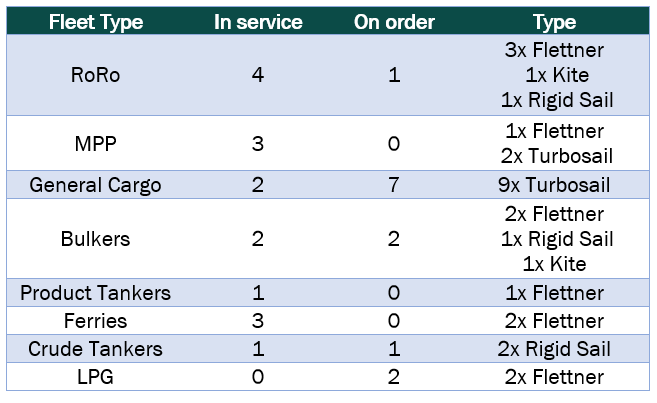Wind
-
-
Most of the vessels presently equipped with wind-assisted propulsion systems (WAPS) are part of an EU-funded project. The uptake of the technology is rather slow since (1) it’s not easy to compare the existing solutions and to estimate the reduction potential of the technology since this will depend on several factors such as the type of vessel and the route where the vessel will be sailing (which is for most maritime vessels also not fixed). Additionally (2), at current fuel prices the return of investment (ROI) is rather low.
In order to (fully) benefit from the extra power that is generated by the WAPS, a system integration is required so that the engine does not run sub-optimally. Working with supercapacitors or multiple main engines instead of one could be an option. Replacing a single 2-stroke main engine with multiple smaller medium speed engines can be done at similar or even lower CAPEX whilst bringing benefits in operational flexibility and vessel utility since smaller engines mean more cargo space.
-
-
-
-
Uptake of WAPS
-
© Clarksons Database (March 2022)
-
Applicability
-
WAPS are most suited for (1) slower sailing vessels (2) with free deck-space (3) that sail on windier routes. Due to the different parameters that impact the efficiency gains of installing WAPS, benefits should be investigated on a case-by-case basis. Another factor that should be taken into account is the robustness of the systems since some vessels might encounter sandstorms in certain regions or harm the systems during loading & unloading (e.g. ore carriers).
-
-


